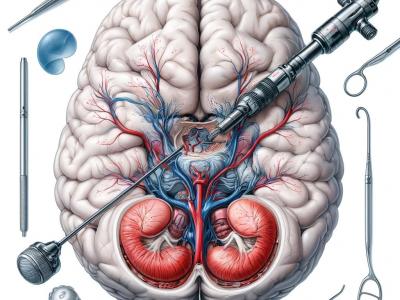Machine Learning

In the evolving landscape of 5G network, network slicing has been considered as a key technology for the realization of multiple virtual networks running on a shared physical infrastructure, each designed to fulfill a specific service or application. However, with such networks, the dynamic and real-time allocation of these resources remains a prime concern, particularly with respect to highly variable conditions of traffic.
- Categories:
 277 Views
277 Views
The data set is from the Case Western Reserve University Rolling Bearing data set. SK6205 bearing located at the drive end is selected as the research object, and the acquisition frequency is 12KHz. The fault type is divided into three types, namely inner ring fault, rolling body fault and outer ring fault, and each fault type is divided into three fault sizes: 0.007, 0.014 and 0.021 inches.The length of each sample is 1024 and the repetition rate is 50%
- Categories:
 615 Views
615 Views
The dataset is based on the latent faults detected by the popular OSS static code analysis tool, sonarQube Community Edition. The dataset is populated using the latent faults found in popular Java software from the open source repository GitHub . This dataset was specifically developed to identify the significant latent faults that affect the reliability of Java programs. This dataset can be used in its current form to conduct experiments with machine learning algorithms and to infer new reliability characteristics of Java programs. Please refer to the documents associated with sona
- Categories:
 21 Views
21 Views
Classifying the driving styles is of particular interest for enhancing road safety in smart cities. The vehicle can assist the driver by providing advice to increase awareness of potential dangers. Accordingly, dissuasive measures, such as adjusting insurance costs, can be implemented. The service is called Pay-As-You-Drive insurance (PAYD), and to address it, the paper introduces a method for constructing a database of simulated driver behaviors using the Simulation of Urban MObility Simulation of Urban MObility (SUMO) simulator.
- Categories:
 388 Views
388 ViewsThis dataset consists of 462 field of views of Giemsa(dye)-stained and field(dye)-stained thin blood smear images acquired using an iPhone 10 mobile phone with a 12MP camera. The phone was attached to an Olympus microscope with 1000× objective lens. Half of the acquired images are red blood cells with a normal morphology and the other half have a Rouleaux formation morphology.
- Categories:
 1028 Views
1028 ViewsThis dataset comprises 1718 annotated images extracted from 29 video clips recorded during Endoscopic Third Ventriculostomy (ETV) procedures, each captured at a frame rate of 25 FPS. Out of these images, 1645 are allocated for the training set, while the remainder is designated for the testing set. The images contain a total of 4013 anatomical or intracranial structures, annotated with bounding boxes and class names for each structure. Additionally, there are at least three language descriptions of varying technicality levels provided for each structure.
- Categories:
 426 Views
426 Views
This data reflects the prevalence and adoption of smart devices. The experimental setup to generate the IDSIoT2024 dataset is based on an IoT network configuration consisting of seven smart devices, each contributing to a diverse representation of IoT devices. These include a smartwatch, smartphone, surveillance camera, smart vacuum and mop robot, laptop, smart TV, and smart light. Among these, the laptop serves a dual purpose within the network.
- Categories:
 1975 Views
1975 Views¢This study delves into the connections between green ELT, DEIB, virtual reality, mediation, life skills, and task-based teaching, learning, and assessment in the context of sustainable and inclusive education. The study emphasizes the significance of incorporating ecological concepts into language instruction, advocating for diversity, fairness, and inclusivity in learning environments, and using virtual reality technology to augment language acquisition.
- Categories:
 167 Views
167 Views
Human facial data hold tremendous potential to address a variety of classification problems, including face recognition, age estimation, gender identification, emotion analysis, and race classification. However, recent privacy regulations, such as the EU General Data Protection Regulation, have restricted the ways in which human images may be collected and used for research.
- Categories:
 411 Views
411 Views
The dataset provides an end-to-end (E2E) perspective of the performance of 360-video services over mobile networks. The data was collected using a network-in-a-box setup in conjunction with a Meta Quest 2 head-mounted display (HMD) and a customer premises equipment (CPE) to provide 5G connectivity to the glasses (WiFi-native).
- Categories:
 195 Views
195 Views

